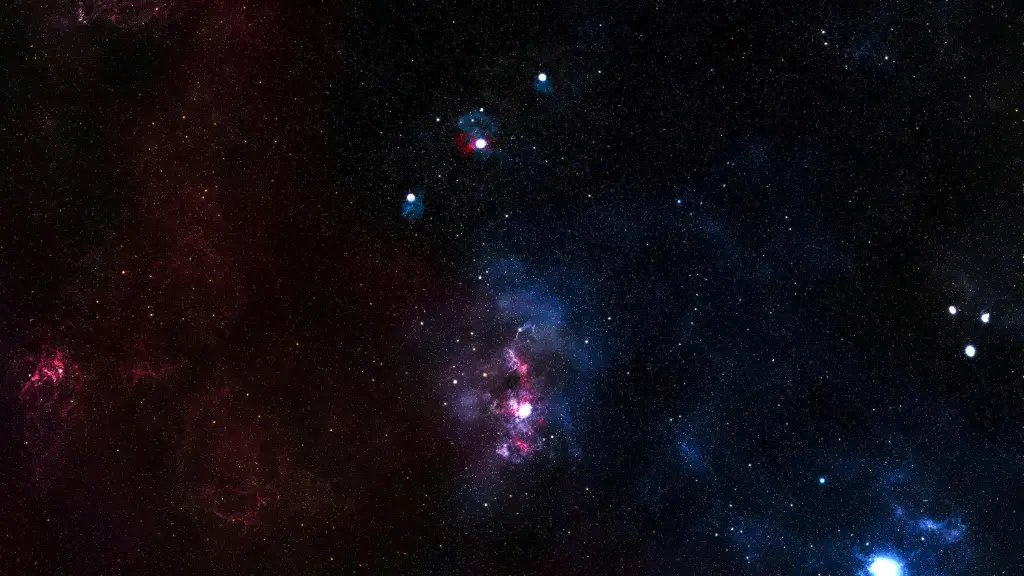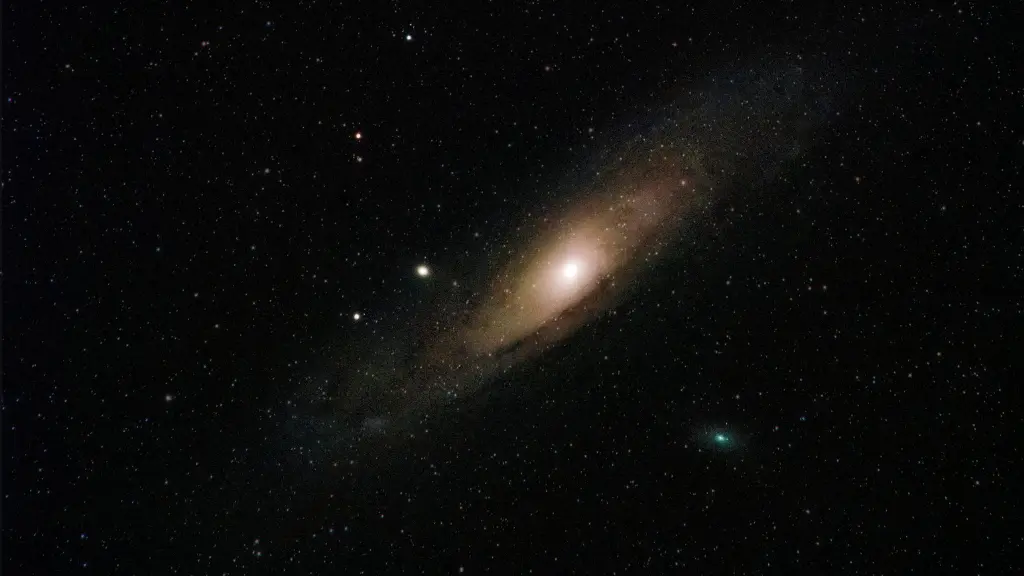

The Electric Universe is a theory that suggests that electricity plays a more significant role in the universe than previously thought. This theory proposes that electrical forces are the driving force behind many of the observed phenomena in the cosmos. According to the Electric Universe theory, stars, galaxies, and other celestial bodies are not isolated entities but are instead part of an interconnected electrical network.
One of the fundamental principles of the electricuniverse theory is that plasma, a state of matter consisting of charged particles, is the dominant form of matter in the universe. This theory suggests that plasma is responsible for many of the observed phenomena in space, including the formation of stars and galaxies, the behavior of black holes, and the structure of the universe itself.
The Electric Universe theory challenges many of the assumptions made by traditional astrophysics and cosmology. While it remains a controversial theory, it has gained a following among some scientists and enthusiasts who believe that it offers a more comprehensive and accurate explanation of the universe and its workings.

The Electric Universe theory proposes that electricity and magnetism are the fundamental forces of the universe, and that these forces play a much larger role in the cosmos than previously thought. The theory has its roots in the work of scientists such as Nikola Tesla, Hannes Alfvén, and Kristian Birkeland, who all recognized the importance of electric and magnetic fields in the universe.
In the early 20th century, the dominant theory of the universe was the Big Bang theory, which held that the universe began with a massive explosion and has been expanding ever since. However, the Electric Universe theory challenges this view, arguing that the universe is instead electrically connected and that the observed phenomena can be explained by electric and magnetic forces.
The Electric Universe theory is based on several key principles, including:
The universe is electrically charged: The Electric Universe theory holds that the universe is filled with charged particles, which interact with each other through electric and magnetic fields.
Plasma plays a key role: Plasma is a state of matter that consists of charged particles, and it is thought to be the most common state of matter in the universe. The Electric Universe theory proposes that plasma plays a key role in many observed phenomena, including the formation of stars and galaxies.
Electric currents flow through space: The Electric Universe theory holds that electric currents flow through space, creating magnetic fields and driving many observed phenomena.
The sun is electrically powered: The universe electric theory proposes that the sun is powered by electric currents, rather than by nuclear fusion as in the standard model.
Overall, the Electric Universe theory offers a compelling alternative to the standard model of the universe, and it has gained a following among scientists and laypeople alike. While the theory is still controversial and has yet to gain widespread acceptance, it offers a fascinating glimpse into the workings of the cosmos.

As an electric universe theorist, I believe that the universe is primarily composed of plasma, which is an ionized gas consisting of charged particles. Plasma is the fourth state of matter, and it is the most common state of matter in the universe. Plasma is also an excellent conductor of electricity, which means it can carry electric currents and generate magnetic fields.
In the electric universe model, cosmic plasma is responsible for many of the observed phenomena in space, such as the formation of stars and galaxies. The electric currents in cosmic plasma generate magnetic fields, which in turn shape the plasma into filaments, sheets, and bubbles. These structures can be seen in many astronomical images, such as the filaments in the Crab Nebula and the bubbles in the Orion Nebula.
The electric universe model also explains the dynamics of galaxies in terms of electromagnetic forces. In this model, galaxies are not held together by dark matter, but by electric currents flowing through cosmic plasma. These currents generate magnetic fields, which in turn create a force that holds the galaxy together.
The electric universe model also explains the observed rotation curves of galaxies, which are the velocities of stars and gas as a function of their distance from the galaxy’s center. In the standard model of cosmology, the rotation curves are explained by the presence of dark matter. However, in the electric universe model, the rotation curves are explained by the electric currents flowing through the cosmic plasma.
In conclusion, the electric universe model provides a compelling explanation for many of the observed phenomena in space, such as the formation of stars and galaxies, and the dynamics of galaxies. The electric currents in cosmic plasma generate magnetic fields, which shape the plasma into filaments, sheets, and bubbles, and hold galaxies together.

In the Electric Universe model, gravity is viewed as an electromagnetic force that is generated by the movement of charged particles. This is in contrast to the conventional model of gravity, which states that gravity is a fundamental force that is generated by the mass of an object.
According to the Electric Universe model, charged particles in space create electric fields that interact with each other, generating a force that is similar to gravity. This force is known as the electric force, and it is much stronger than gravity. The electric force is responsible for the movement of charged particles in space, and it can also affect the motion of neutral particles.
The Electric Universe model also suggests that the electric force can explain the formation of galaxies, stars, and planets. According to this model, charged particles in space can come together to form structures, which eventually become stars and planets.
The Electric Universe model challenges the conventional model of gravity in several ways. For example, the Electric Universe model suggests that the electric force is much stronger than gravity, which means that gravity may not be the dominant force in the universe.
The Electric Universe model also suggests that the formation of galaxies, stars, and planets can be explained by the electric force, rather than by gravity. This challenges the conventional model of gravity, which states that gravity is responsible for the formation of these structures.
Overall, the Electric Universe model offers a new perspective on gravity and the formation of structures in the universe. While it is still a controversial theory, it has gained a following among some scientists and researchers who are interested in exploring alternative explanations for the workings of the universe.

As the Electric Universe theory gains more attention, many individuals have contributed to its development and popularization. In this section, I will discuss the contributions of david talbott electric universe, one of the most influential proponents of the Electric Universe theory.
David Talbott is a writer and researcher who has made significant contributions to the Electric Universe theory. He is the author of “The Saturn Myth,” a book that explores the role of Saturn in ancient mythology and its potential connection to the Electric Universe theory.
Talbott has also produced a number of documentaries and lectures on the subject, including “Symbols of an Alien Sky,” which explores the role of plasma in the universe and its potential impact on ancient cultures. In addition, he has worked closely with physicist and Electric Universe theorist Wallace Thornhill to develop and promote the theory.
Talbott’s contributions to the Electric Universe theory have been instrumental in bringing the theory to a wider audience. His work has helped to popularize the theory and generate interest in the scientific community.
Overall, David Talbott’s contributions to the Electric Universe theory have been significant. His work has helped to advance the theory and bring it to a wider audience, and his collaborations with other proponents of the theory have helped to build a strong foundation for further research and exploration.

As the Electric Universe theory gains more attention and acceptance in the scientific community, its ideas have also begun to permeate popular culture. In this section, I will explore the impact of the Electric Universe theory in media and music.
One notable example of the Electric Universe theory’s influence in media is the streaming platform Gaia. Gaia features a show called “Cosmic Disclosure,” which explores the Electric Universe theory and its implications for humanity. The show has gained a significant following and has helped to popularize the theory among laypeople.
In addition to media, the Electric Universe theory has also made its way into music. The German psychedelic trance project Electric Universe, founded by Boris Blenn, takes inspiration from the theory in its music. The project has released numerous albums and has gained a dedicated fan base within the psychedelic trance community.
Overall, the Electric Universe theory’s impact on popular culture is still relatively small, but as the theory gains more acceptance in the scientific community, its influence is likely to continue to grow.

As with any scientific theory, the Electric Universe (EU) has faced both critiques and debates, as well as support and acceptance from the scientific community. In this section, I will discuss the reception of the EU theory by the scientific community.
One of the main critiques of the EU theory is that it lacks empirical evidence. Some scientists argue that the EU theory relies too heavily on anecdotal evidence and that the proposed mechanisms do not fit with the laws of physics. Additionally, the EU theory has been criticized for its lack of predictive power, as well as its inability to explain certain astronomical phenomena.
Another critique of the EU theory is that it is too simplistic. Some scientists argue that the EU theory oversimplifies complex phenomena, such as the behavior of stars and galaxies. They claim that the EU theory does not take into account the full range of physical processes that are required to explain these phenomena.
Despite these critiques, the EU theory has gained some support from the scientific community. Some scientists argue that the EU theory provides a viable alternative to the traditional cosmological model. They claim that the EU theory can explain certain phenomena that are not easily explained by the traditional model, such as the behavior of comets and asteroids.
Furthermore, the EU theory has gained popularity among a group of scientists known as the Thunderbolts Project. This group promotes the EU theory and has organized several conferences and workshops to discuss the theory and its implications.
In conclusion, the scientific reception of the Electric Universe theory has been mixed. While it has faced critiques and debates, it has also gained some support from the scientific community. As with any scientific theory, further research and evidence will be required to fully understand the validity of the EU theory.

As a proponent of the Electric Universe theory, I believe it is important to educate the public and academia on this alternative view of the cosmos. Through academic resources and public outreach, we can provide a better understanding of the universe and its workings.
Several academic resources are available for those interested in learning more about the Electric Universe theory. The Thunderbolts Project, a non-profit organization dedicated to advancing the Electric Universe theory, provides a wide range of resources for educators. These resources include textbooks, lectures, and online courses for students of all levels.
Additionally, the Electric Universe theory has gained recognition in some academic circles, with several peer-reviewed papers published in scientific journals. These papers provide evidence for the theory and offer new perspectives on traditional astrophysical models.
Public outreach is crucial in spreading awareness and understanding of the Electric Universe theory. The Thunderbolts Project hosts several events and conferences throughout the year, providing an opportunity for enthusiasts and experts to come together and discuss the latest developments in the field.
Furthermore, the Electric Universe theory has gained popularity through various media outlets, including documentaries, podcasts, and YouTube videos. These resources provide a platform for experts to share their knowledge and engage with the public.
In conclusion, the Electric Universe theory has much to offer in terms of education and understanding of the cosmos. Through academic resources and public outreach, we can continue to advance this alternative view of the universe.

As we continue to explore the Electric Universe, there are a number of upcoming missions that will help us to better understand the nature of this fascinating phenomenon. One of the most exciting of these is the upcoming launch of the James Webb Space Telescope, which is set to take place in 2021. This powerful new instrument will be capable of peering deeper into space than ever before, and will allow us to observe the universe in unprecedented detail.
Another mission that is sure to be of interest to those studying the Electric Universe is the Europa Clipper mission, which is set to launch in the mid-2020s. This mission will explore Jupiter’s moon Europa, which is believed to have a subsurface ocean that could potentially harbor life. By studying the electromagnetic interactions between Europa and Jupiter, we may be able to gain new insights into the Electric Universe.
In addition to these exciting new missions, there are also a number of theoretical advancements that are helping to shed light on the nature of the Electric Universe. One of the most promising of these is the development of new computer simulations that allow us to model the behavior of plasma in space. By using these simulations to study the electromagnetic universe interactions between celestial bodies, we may be able to gain new insights into the workings of the Electric Universe.
Another area of theoretical advancement that is worth mentioning is the growing body of research into the role of magnetic fields in the universe. While magnetic fields have long been recognized as an important factor in the behavior of plasma, recent discoveries have shown that they may play an even greater role than previously thought.
Overall, the future of research and exploration in the Electric Universe is looking brighter than ever. With new missions and theoretical advancements on the horizon, we are sure to gain a deeper understanding of this fascinating phenomenon in the years to come.

By studying the behavior of magnetic fields in space, we may be able to gain new insights into the workings of the Electric Universe. See more articles like this by clicking here: Universe Simulator: Exploring the Cosmos in a Virtual World.